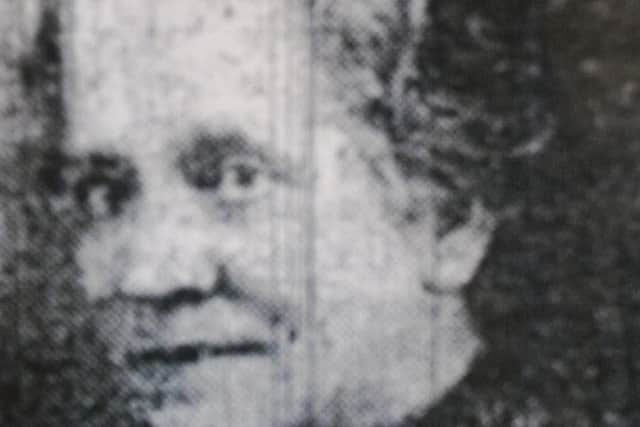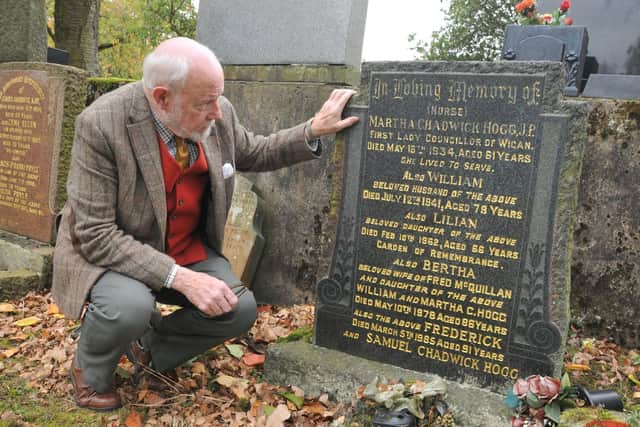The story of Wigan's trailblazing first female councillor
and live on Freeview channel 276
She is perhaps one of the most important people ever to come from the town, yet her name is not as readily known as other heavyweight contributors to the borough’s history.
But as Wigan’s first ever female councillor, Martha Hogg rightly deserves to be a household name.
Advertisement
Hide AdAdvertisement
Hide AdBorn into poverty in 1872, Martha was the third of six children to John and Margaret. She left school aged 13 and worked in a cotton mill, but on her marriage to William Hogg in 1891, was forced to leave her job, as was the custom.


The couple lived in Greenough Street, and had four children.
Martha became a midwife in 1912 and delivered thousands of babies across Wigan, working in the poverty-stricken communities of industrial Wigan, which were later immortalised in George Orwell’s book The Road To Wigan Pier.
She was shocked by what she saw and joined the Labour party. She first stood for election, unsuccessfully, in 1919, narrowly missing victory by less than 100 votes. Undeterred, she ran again the following year, this time winning with a majority of 119 votes.
Advertisement
Hide AdAdvertisement
Hide AdIn doing so, she became one of only a handful of women councillors in Britain and the first in Wigan.


Local historian Tom Walsh, who has extensively researched Martha’s life, said: “I think that if there was a fair voting system for women, she would have got in then.
“But at the time, women had to be 30 to vote so she just missed out.
“She did get elected the next year though and became Wigan’s first female councillor and made quite an impact.”
Advertisement
Hide AdAdvertisement
Hide AdOnce she became a councillor, Martha played an active role on the council, serving on a number of committees.
Her campaigns for better conditions for Wigan’s blind and for ex-servicemen began straight away, and she showed great concern for the plight of mothers she cared for as midwife.
Another first for Martha came when she was elected as the first female representative of Wigan Council’s Watch Committee, and according to Mr Walsh’s research, she was very well thought of. She was then appointed a magistrate in 1931.
Feisty Martha made many marks on Wigan life before she died suddenly in 1934, aged just 61. Her husband William died in 1941.
Advertisement
Hide AdAdvertisement
Hide AdMartha’s funeral is said to have brought Wigan to a standstill. Her coffin was carried into the church by police constables, and hundreds of floral tributes were laid out.
In attendance were numerous local dignitaries, including the Chief Constable, Thomas Pey.
Members of the Wigan Women’s Labour Party walked in procession, including Mrs Ethel Naylor, who many years later was to become Wigan’s first lady mayor. Martha was buried in Ince cemetery.
Sadly, much of her trail-blazing contribution to local politics has been largely forgotten. But in recent years, Mr Walsh and fellow campaigners have worked hard to provide her with fitting tributes.
Advertisement
Hide AdAdvertisement
Hide AdA commemorative plaque was unveiled at Wigan town hall in 2013, and the following year, the maternity unit at Wigan Infirmary also unveiled a tribute to her.
Mr Walsh said: “Martha Chadwick Hogg was one of the greatest figures to hail from Wigan, or given her achievements, from anywhere in the country.
“I think she can fairly rank with the likes of the Countess de Markaievicz, the first women to be elected to the House of Commons in 1918 and Nancy, Lady Astor, the first women to take her seat in the chamber, the latter being shoehorned in to her husband’s constituency (Portsmouth Sutton) on his elevation to The House of Lords.”
Thanks for reading. If you value what we do and are able to support us, a digital subscription is just £1 for your first month. Try us today by clicking here and viewing our offers.